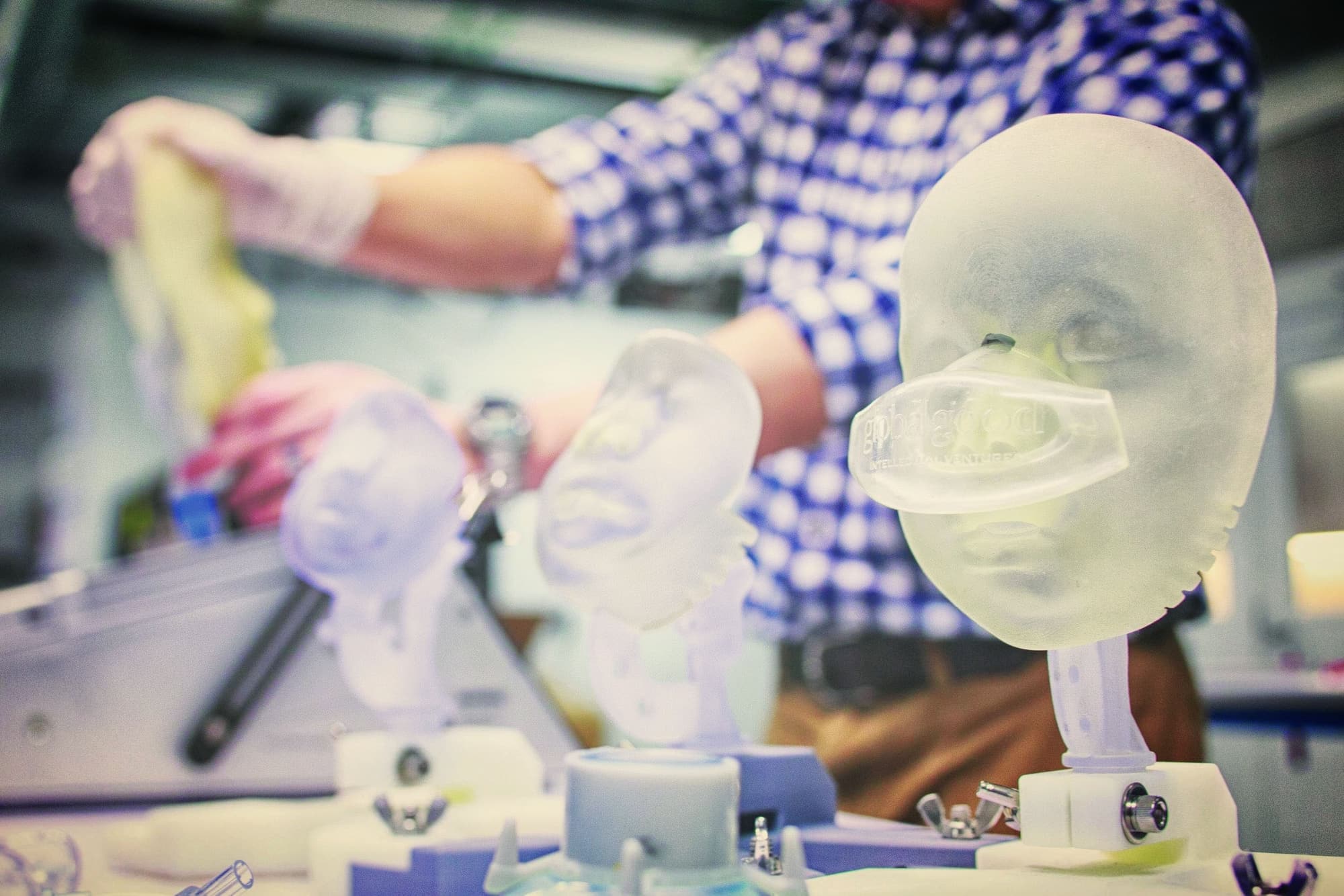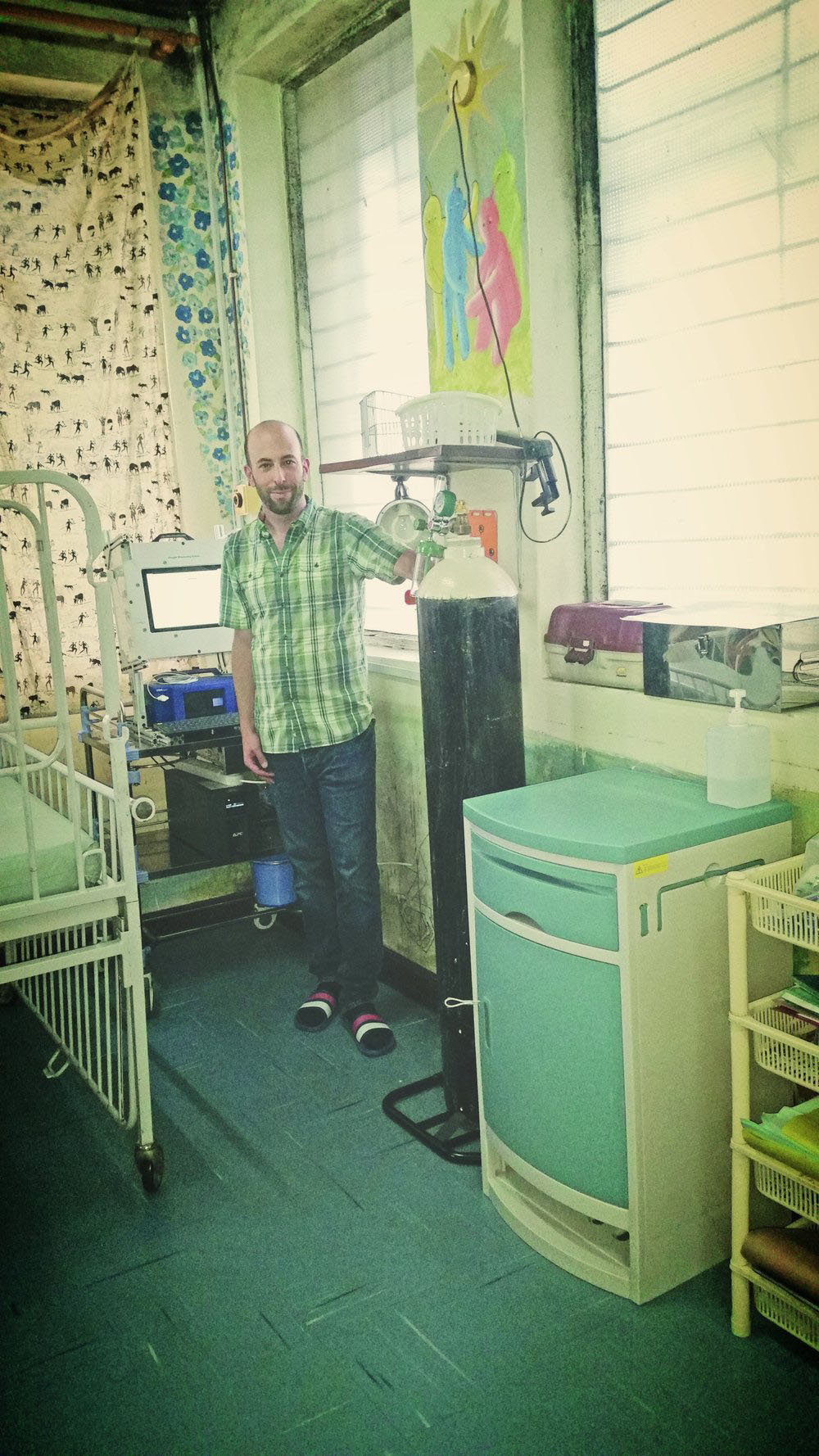Breath of Life
Dan Lieberman and his team are working to bring oxygen to children at risk of dying from pneumonia in the developing world.
by Dan Morrell

Dan Lieberman
When Dan Lieberman (PhD ’05) started really getting into combustion and high-speed fluid mechanics as an undergrad, he asked his advisor about where he should go to graduate school. “He basically said, ‘Go work for Joe Shepherd at Caltech,’” he says. (Shepherd, who graduated with his own PhD from Caltech in 1981, is currently the vice president of student affairs and C. L. “Kelly” Johnson Professor of Aeronautics and Mechanical Engineering.) “And that’s what I did.” Lieberman currently works as a principal investigator at the Bellevue, Washington-based Intellectual Ventures—a company he discovered while reading SuperFreakonomics, a follow-up to the bestselling Freakonomics. “The way that the book described the lab and the opportunity to learn and attack different problems really appealed to me,” he says. Now four years into his work at Intellectual Ventures, he says he’s also come to appreciate both the method and the mission of the work. “We have the flexibility to work on a wide range of problems—and we work for the greater good,” he says. Lieberman is currently leading the company’s fluid and respiratory systems group, where—as he explains below—he’s spent the last two years working on an innovative solution to an often overlooked problem.

FRESH AIR: Lieberman and his team developed an oxygen delivery system that makes an oxygen bottle last two times longer than normal.
The Problem
Childhood pneumonia.
“We’ve defined a series of important challenges dealing with children dying from pneumonia, which turns out to be the number one cause of death of children under 5 on the planet,” says Lieberman. The World Health Organization estimates that pneumonia accounts for 1.4 million deaths for this group annually—accounting for about 18 percent of all deaths for the global under-5 population. “There’s a whole host of reasons why this is a problem, but ultimately, when kids do get a respiratory illness, regardless of what medication they might take, they end up needing oxygen to weather the storm. That is often not available, so we’ve been developing technologies to help improve the availability of oxygen in developing countries.”
THE OLD SOLUTION
The current oxygen-delivery system for children suffering from pneumonia consists of a nasal cannula—two little plastic tubes, inserted into the nostrils—delivering oxygen from a tank. The problem? A short supply of tanks compounded by the cannula’s inefficient delivery.
FINDING A NEW SOLUTION
Lieberman and his team built a respiratory simulator in their lab, complete with 3-D printed faces and airways. “We used that to work out the physiology and understand the breathing mechanics of small children—which is very different than adults—and to look at what kind of product could potentially work for this size patient,” says Lieberman. They came up with a mask-type device (pictured above), which offers a massive efficiency boost: “We can produce the same concentration of oxygen in your lungs as a nasal cannula using one-half to one-third the flow,” Lieberman says. “That would make an oxygen bottle last two to three times as long”—a boon to treatment centers that are both cash-strapped and overcrowded.
“I think that at every step of my career— including at Caltech—the science has always been cool,” says Lieberman. “There has been beautiful science, and challenging problems to solve.”
ON TRIAL
In September, Lieberman and a team from Intellectual Ventures began a clinical field trial of the mask device at a hospital in Uganda. “We had done a lot of testing in the lab, but this was our first opportunity to evaluate it on patients in a controlled environment.”
WHAT’S NEXT
Oxygen concentrators are the norm in Western hospitals, which usually rely on electric power to separate oxygen from the air and deliver it to patients. “The problem is, those are designed for our part of the world, and not for hot, tropical environments with unreliable power,” says Lieberman. So his team is also working on a souped-up oxygen storage and delivery system. “The idea is to have something that we can deploy to smaller health facilities, so that patients can get the treatment when they need it and not have to wait to get higher up in the hospital system, which usually means having to go to a bigger city.”
MISSION-MINDED
“I think that at every step of my career—including at Caltech—the science has always been cool,” says Lieberman. “There has been beautiful science, and challenging problems to solve.” And this job, he says, has the added benefit of making the world a better place. “I just feel good about it.”